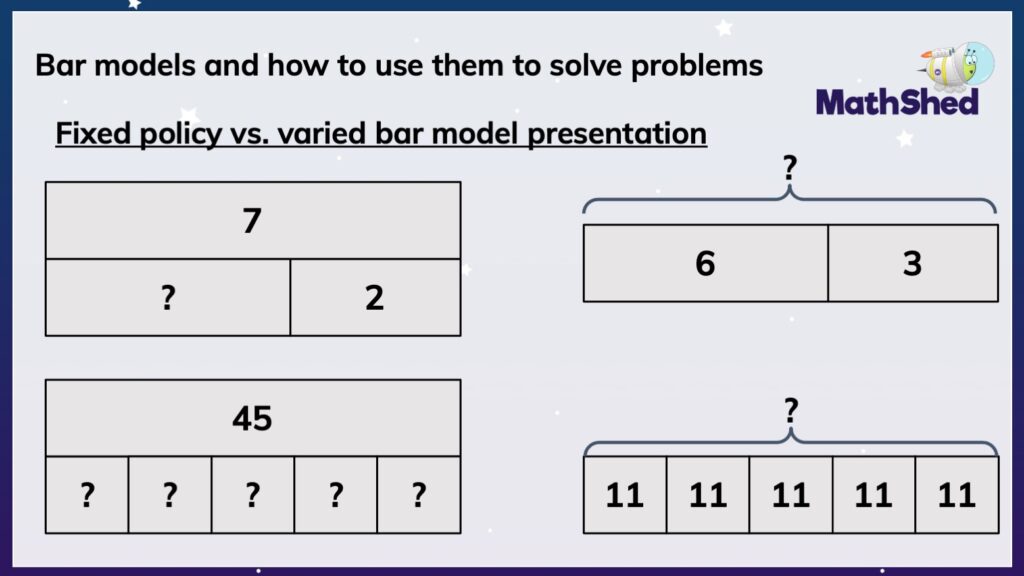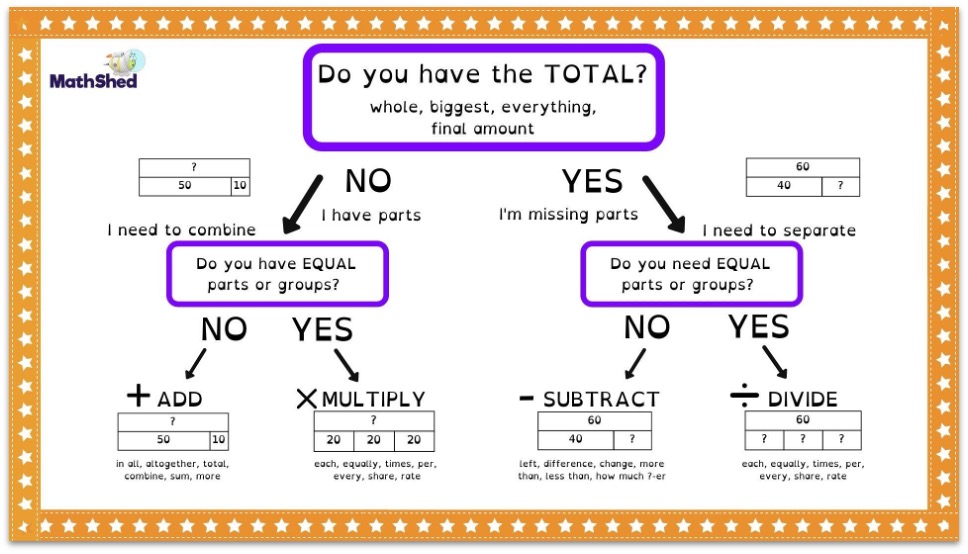Everything About Bar Version Drawing Techniques: Transforming Complex Math Problems Into Straightforward Visuals
Bar design attracting techniques supply a practical technique to comprehending complex mathematics problems. By standing for numbers and their relationships with basic rectangle-shaped bars, students can visualize procedures like enhancement, reproduction, department, and reduction. This technique not just improves understanding but likewise promotes important believing skills. As teachers explore the benefits of bar versions, they may reveal brand-new techniques to engage learners in maths. What insights can these methods offer in real-world scenarios?
Understanding the Bar Version Idea

Bench design promotes vital reasoning by motivating trainees to envision analytical processes. It enables them to determine missing out on worths through relative evaluation of the sizes of benches, making abstract concepts tangible. This method is especially effective for younger trainees who might fight with mathematical depictions alone. Therefore, bench design cultivates a strong fundamental understanding of mathematics, improving total analytic abilities and advertising confidence in taking care of numerical procedures.
Just How to Create Bar Versions for Addition and Reduction
To successfully develop bar models for enhancement and reduction, one need to first identify the amounts involved in the problem. This involves acknowledging the complete amount, in addition to the private components that add to that overall. For addition, the version normally contains two bars standing for the different quantities, with a 3rd bar showing their incorporated sum. Each bar's size must match to its mathematical worth, making it easy to imagine the connection between the quantities.
In reduction, the version is a little different; it includes one bar for the total and another for the amount being deducted. The remaining section can be represented as a different bar, highlighting the distinction. By clearly labeling each bar with its equivalent worth, the version ends up being an efficient aesthetic tool. bar model drawing techniques. This technique not just aids in understanding the operations yet likewise enhances problem-solving abilities, making mathematics extra available to students
Utilizing Bar Versions for Reproduction and Department
Bar designs work as effective tools for envisioning reproduction and department, streamlining complicated issues into workable components. By standing for quantities with rectangular bars, learners can conveniently realize partnerships between numbers. In reproduction, a bar model can show the principle of groups, where one bar stands for the total amount and smaller sized sectors stand for specific groups. A version could show 4 teams of 3, with the overall length of the bar indicating 12.
In division, bar designs successfully portray the distribution of an overall quantity right into equivalent components. A single bar can stand for the complete number being split, with segments showing the equal components created. This visual depiction aids pupils comprehend the idea of segmenting or sharing. On the whole, utilizing bar models for these procedures boosts understanding by transforming abstract calculations into concrete visuals, enabling students to envision the relationships in between divisors and multiplicands effectively.
Fixing Word Problems With Bar Models
Word troubles can typically present difficulties for students, making it difficult to recognize the essential operations to solve them. Bar versions act as a beneficial tool in this situation, transforming complex circumstances into clear graphes. By segmenting information into bars, trainees can much better understand relationships and amounts associated with the issue.
When confronted with a word issue, students can start by identifying key parts such as totals, components, and the connections in between them. Each aspect can be highlighted using unique bars, enabling students to visualize the trouble's framework. This approach promotes sensible thinking, enabling learners to determine which mathematical procedures to use.
When dealing with addition or reduction, the bar design can represent the whole and its components, while for multiplication and department, it can delineate equivalent teams. On the whole, bar designs streamline the problem-solving procedure, making it much more easily accessible for students to reach the appropriate services.
Tips for Mentor Bar Model Techniques Successfully
Effective teaching of bar design strategies can considerably improve students' understanding of mathematical principles. To achieve this, teachers ought to begin by introducing the basic concepts of bar designs, guaranteeing that students understand the partnership between amounts represented visually. Clear, detailed presentations throughout lessons can aid debunk the procedure, cultivating self-confidence in students as they find out to apply these methods.
Encouraging collaborative group job can likewise be beneficial, as check here trainees can share concepts and methods, enhancing their learning through peer interaction. Educators should provide a selection of method problems, progressively raising complexity to test students without overwhelming them. Using real-life circumstances can make the problems a lot more relatable, improving interaction.
Routine responses is vital; educators ought to provide useful objection that overviews trainees in improving their abilities. Lastly, incorporating technology, such as interactive software or online resources, can provide added assistance and practice chances, solidifying trainees' understanding of bar models.
Real-Life Applications of Bar Design Illustration
While many trainees originally see bar design attracting as a class device, its applications extend much beyond academic settings right into everyday life. This technique can simplify budgeting, making it possible for people to envision earnings and expenses clearly. By breaking down economic parts right into bars, one can easily identify investing patterns and save much more effectively.
Additionally, bar designs help in preparation and arranging jobs. When taking care of time for various activities, individuals can stand for each task with a bar, providing an aesthetic summary of priorities and time allowance.

Often Asked Concerns
How Do Bar Designs Assist With Trainees' Problem-Solving Skills?
Bar models improve trainees' problem-solving skills by supplying an aesthetic representation of mathematical partnerships. This clarity aids them understand intricate concepts, assists in sensible reasoning, and sustains the advancement of effective strategies for taking on different problems.
Can Bar Versions Be Used for Geometry Issues?
Bar models can without a doubt be used for geometry problems, assisting trainees in envisioning relationships between shapes and dimensions. They facilitate understanding of concepts such as area, border, and spatial reasoning in a structured manner.
Exist Specific Software Tools for Creating Bar Models?
Yes, a number of software tools exist for developing bar designs, including Microsoft PowerPoint, Google Slides, and specialized math applications like Mathigon and GeoGebra, which help with the visualization of mathematical ideas with adjustable and interactive bar depictions.
What Age Team Perks A Lot Of From Bar Design Techniques?
Kids aged 7 to 12 benefit most from bar design techniques (bar model drawing techniques). This age team, generally finding out fundamental math ideas, finds aesthetic depictions specifically handy for recognizing partnerships in between numbers and solving intricate troubles better
How Can Parents Assistance Bar Design Discovering in the house?
Parents can sustain bar model knowing by supplying visual help, participating in discussions regarding analytic, encouraging method via games, and strengthening ideas with day-to-day examples, making math delightful and relatable for their youngsters.
For enhancement, the design generally consists of 2 bars representing the different amounts, with a 3rd bar indicating their combined sum. In multiplication, a bar model can illustrate the idea of teams, where one bar stands for the complete quantity and smaller sectors stand for individual teams. To achieve this, instructors ought to start by presenting the fundamental concepts of bar versions, making certain that pupils understand the partnership in between amounts represented visually. Bar versions improve trainees' problem-solving skills by providing an aesthetic depiction of mathematical relationships. Bar versions can undoubtedly be used for geometry issues, helping trainees in envisioning partnerships in between forms and dimensions.